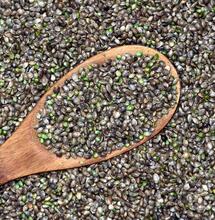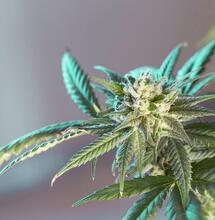Plants for Health and Longevity, Part II

Daily consumption of plants containing ginsenosides will lead to a longer and healthier life.
Daily consumption of plants containing ginsenosides will lead to a longer and healthier life.
|
Siberian ginseng is frequently used by runners to increase speed, endurance and blood-oxygen levels. [Credit: Stanislav Doronenko] |
As we explained in Part I of this two-part series, common types of ginseng provide health-promoting substances known as ginsenosides. Here, we explore other varieties and plants that also offer these alterative medicines.
In addition to the common, readily-available types of ginseng outlined in Part I, specific varieties of ginseng and ginseng-like plants are also used for health and longevity. These include Siberian ginseng, Panax notoginseng (San Chi) and Gynostemma pentaphyllum (Jiao Gu Lan), a plant that contains ginsenoside-like compounds but is in a different genus.
Siberian ginseng or 'Eleuthero' (Eleutherococcus senticosus; Ci Wu Jia) naturally comes from Russia, and Chinese Herbal Medicine has long-respected this plant for its adaptogenic properties. A hardy, wild shrub that is also found in the Soviet Far East, Korea, China and Japan, north of Latitude 38°, the active molecules provided by this root are eleutherosides 'a' and 'b'. In nature, the roots contain a small amount of this medicine; concentrated extracts of Siberian ginseng are best.
Siberian ginseng is 'restorative' rather than 'curative', as it restores weakened health and debilitated conditions. This characteristic gives Siberian ginseng the ability to prolong a healthy life. In the 1960s - when a million dollars was still valuable - the Russian government spent millions of dollars researching and testing Siberian ginseng, which became a supplement of the training program for Soviet Olympic athletes. Russian research found that the variety was useful for increasing stamina and athletic performance.
|
Chinese markets and health food stores are good sources of Siberian ginseng. [Credit: Maša Sinreih in Valentina Vivod] |
Later, in the 1970s, Siberian ginseng was used by cosmonauts in preparation for space exploration, as it was found to assist the mind's ability to focus. This action of the root is one known as 'nootropic'.
Panax notoginseng (or Panax pseudoginseng) is another relative in the ginseng family. Panax pseudoginseng is commonly called San Chi in the traditional Chinese herbal markets where it is commonly found. These roots have a three- to eight-percent ginsenoside content.
San Chi ginseng is used by Traditional Chinese Medicine doctors and martial artists for its ability to vitalize the blood, promoting the healing of bruises and contusions. San Chi will also reduce the pain and swelling associated with an injury.
Modern science has shown that San Chi can lessen lipid and cholesterol levels in the blood, and also possesses the ability to increase coronary blood flow and decrease the consumption of oxygen by heart muscle tissue. Shortening coagulation time makes San Chi a good treatment for hemorrhoids, abnormal uterine bleeding and other forms of hemorrhage.
This variety of ginseng also enhances the function of the immune system. Our bodies are constantly fighting a battle against cancerous cells; cancer cells occur due to the effects of age upon our genetic materials, DNA and RNA. As time progresses and our body's cells are copied over and over, their 'cellular blueprint' (DNA) becomes fuzzy. This faulty DNA replication results in aberrant, rebellious cells - also known as cancer cells. When functioning properly, our immune system is watching for these cells in order to destroy them before they multiply and cause problems. San Chi has been shown to possess anti-tumor properties, although the exact mechanism of this anti-tumor effect is still unknown.
Jiao Gu Lan has also been shown to decrease the formation and size of cancer tumors. Gynostemma pentaphyllum, or Jiao Gu Lan, is another plant with a ginsenoside content. Its active molecules, gypenosides, are identical in structure to ginsenosides. As explained in the previous article, the main ginsenosides are Rb1, Rg1 and Rg2. Gypenoside III is identical to ginsenoside Rb1, gypenoside IV is identical to ginsenoside Rb3, gypenoside VIII is identical to ginsenoside Rd, and gypenoside XII is identical to ginsenoside F2.
|
A cluster of Sweet Tea Vine seeds resembles grapes. |
Unlike ginseng, Jiao Gu Lan is a wild, perennial plant, sometimes called southern ginseng or Sweet Tea Vine, and is common and inexpensive. Also unlike ginseng, the vine is relatively easy to grow. In animal studies, Jiao Gu Lan has been shown to reduce fatigue and shorten the time it takes for mice to learn to swim to a submerged platform in a maze.
Jiao Gu Lan has a long history of use in southern China for health and longevity, but is also utilized in areas of Korea, Thailand, India and Japan. The Chinese government surveyed the areas where an unusual number of people had lived to be over one hundred years old, and found that what they had in common was the consumption of Jiao Gu Lan.
In addition to promoting health and longevity, Jiao Gu Lan is a nootropic herb. Nootropic medicines increase mental abilities, improve memory and enhance thought processes. The other types of ginseng are also nootropic herbs. This ability of Jiao Gu Lan to enhance the functions of the mind is thought to be due in part to its potent antioxidant properties.
Jiao Gu Lan is used for respiratory ailments and immunomodulation to reduce allergic reactions, offering a bronchodilatory effect that, when combined with its ability to moderate the immune system's response, makes it a treatment for the symptoms of asthma.
|
Jiao Gu Lan can be made into a sweet-tasting, medicinal tea and grown as a common garden plant. |
Jiao Gu Lan has been shown to aid in balancing blood sugar. In Type II diabetes patients, Jiao Gu Lan has been shown to stimulate the secretion of insulin, aiding the body in maintaining healthy blood sugar levels. This herb has a sweet flavor and thus makes a tasty tea; its consumption has been shown to inhibit the formation of gastric ulcers and stimulate the production of gastric mucus to protect the lining of the stomach.
In addition, Jiao Gu Lan has been shown to have hepatoprotective effects, shielding the liver from elevations in enzymes due to exposure to acetaminophen.
Jiao Gu Lan is known to lower cholesterol and lipid levels in the body, and also has an adaptogenic effect on blood pressure. Hypotensive patients experience an elevation to normal in blood pressure and hypertensive patients experience a decrease - this decrease is thought to be due to a release of nitric oxide. Jiao Gu Lan improves cardiac function by decreasing peripheral blood flow resistance and heart rate, while increasing stroke volume and improving the flow of blood to the cardiac muscles.
These herbs have so many beneficial effects that they seem to be the cure for everything. This is not exactly true, yet their actions make it reasonable to include them in one's daily diet.



